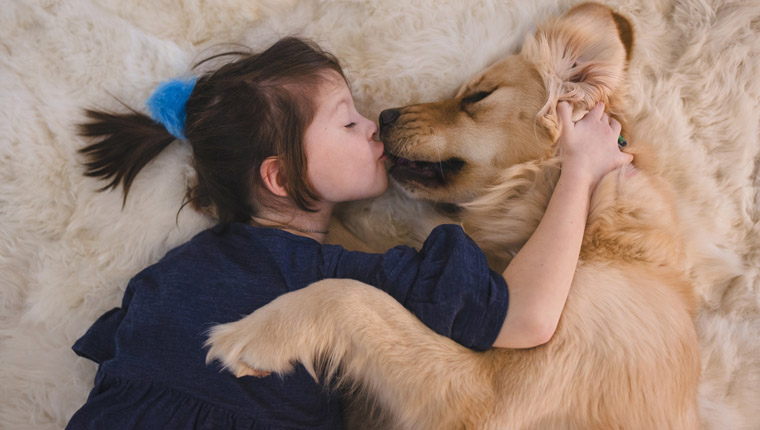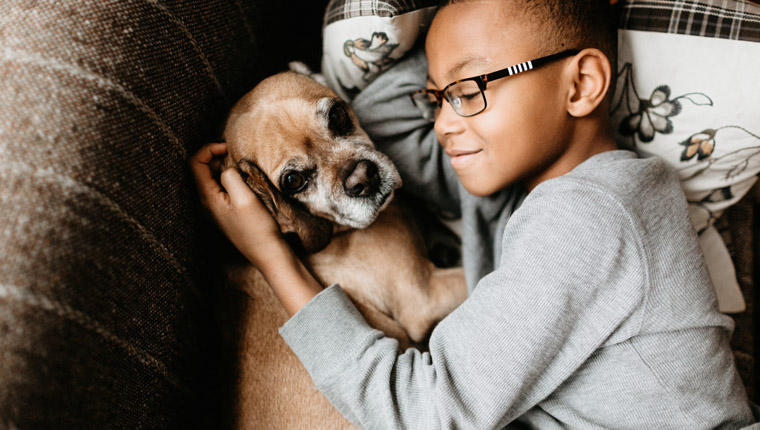It’s hard to imagine a more picture-perfect family image than children and their beloved dogs. It’s so iconic you can almost imagine a Norman Rockwell painting of it.
But the truth of the matter is that children and dogs don’t necessarily get along automatically. Like all cohabiting animals, they must learn to live together to be safe and happy.
Teaching your children how to behave around animals, and dogs especially, can be the difference between long and happy days with your pets and a literal disaster. Children and dogs can both get hurt when they have misunderstandings or negative interactions.
Here are some tips and tricks to ensure your family and your pets can remain on civil and friendly terms.
Teach Them To Respect Boundaries
Pets have boundaries, just like us. Knowing that your dog doesn’t like people touching their food while they’re eating or having anyone sneak up behind them is crucial information that should be taken to heart.
You should understand your dog’s personality and what kinds of behaviors bother them. Your child might tease their brother or sister, but they should know that your dog doesn’t understand teasing the same way. Animals are not humans, and kids need to learn that early on.
Far too often, people think animals don’t have personality traits that determine their temperament. However, those who assume as much end up finding out the hard way how mistaken they are. Hence it is vital to teach your children that if they believe a dog or family pet is telling them something, it’s important that they listen.
When in doubt, simply avoiding the pet until an adult is present to understand the situation might be best.
Foster Understanding Of How Animals Communicate

The easiest way to avoid a bad situation with a pet is to never be in that situation in the first place. While that may generally be easier said than done, knowing how animals communicate discomfort, displeasure, or irritation can be key to preventing instances before they ever begin.
It’s crucial to know how your dog communicates. Growling and baring teeth do not always necessarily need to be interpreted as aggressive; sometimes they are simply ways your dog is telling you to back off.
Make sure your children know that these are important things to watch for when interacting with dogs. Body language such as tail wagging or whining is equally important.
You don’t want your children behaving inappropriately with other children, so make sure they know how to interact safely with dogs too.
Show Them How To Interact With A Dog
If the dog is a family pet, this will be easier to practice and implement. You don’t want your kids to pull other kids’ hair, so teaching children the basics like not pulling a dog’s tail or ears should be easy enough.
Things like hugging, biting, or pinching should also be discussed as no-nos, as your dog might feel they are being attacked or cornered by these actions.
Be a good role model by showing your children how you interact with dogs. Lead by example, and supervise their playtime with your dog closely.
Children knowing how to approach dogs, whether yours or others, is also imperative.
I’ve had many an instance where I have had to ward off children who ran at me while I was walking my dog, informing them that they should never ever run at a dog they don’t know. This was often done to the consternation of parent and child alike.
However, it’s better that they learn how to interact with animals some way, or they could end up hurting or being hurt by a dog they approach the wrong way in the future.
Do you think parents should teach kids how to respect dogs from an early age? Do you have any tips of your own? Let us know in the comments below!









